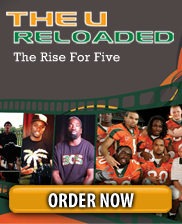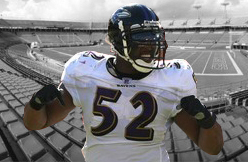Emotions will run high at M&T Bank Stadium on Sunday as Ray Lewis will in all likelihood be playing his last home game with a team whose tenure in Baltimore mirrors his own.
From 1996 to the present, Mr. Lewis has been the undisputed team leader.
The Baltimore Ravens, established in 1996 who arrived into town from Cleveland, have reached the NFL playoffs in 9 of 13 seasons since (and including) 2000 when they won the Super Bowl. 5 of those appearances have occurred consecutively dating back to 2008 and the arrival of Coach John Harbaugh.
From 2000 (the Ravens Super Bowl winning year) through the present, the Lewis-led Baltimore defense finished among the league’s Top 4 defenses 7 of 13 years…and only 3 times finished outside of the Top 10.
In short, Ray Lewis’ energetic play and inspirational demeanor is unquestioned, and he is a large reason for the team’s defensive success over the years.
But how much of the franchise’s $1.16 billion estimated worth (as of Forbes’ 2012 valuation estimates) is he responsible for?
Let’s account for inflation so we can compare apples to apples. Multiplying the 1997 estimated nominal franchise value ($329 million) by a factor of approximately 1.433 (the ratio of the 2012 and 1997 CPIs) implies that the 1997 franchise value measured in current 2012 dollars was roughly $470 million. This yields a $690 million disparity between the 2012 and 1997 franchise values.
How much of that additional $690 million can be attributed to Ray Lewis?
First, we must account for the financial consequences associated with a team that receives a new stadium. As the time series data on the team’s revenues from the late 1990s and early 2000s shows, revenues realized a larger spike once the team started playing at M&T Bank Stadium than even after their World Championship.
For example, team revenue for 1998 (the first year of the new stadium) was $120 million…or an increase of 64% over the $73 million earned in 1997. Conversely, team revenues for the 2000 championship season were $139 million…or an increase of 13% over the $123 million earned in 1999. Throughout the 2000s, there were no one-year percentage increases in revenue that even approached the 64% increase generated from the new stadium effect.
In short, without a relatively new stadium, the Ravens would be more apt to have a franchise value in the $800-900 million range. Thus, a new stadium in my estimation explains between one-third to one-half of the $690 million boost in franchise value experienced during Lewis’ tenure.
Second, we must account for the team’s success. To appreciate the importance of success, consider that the Cleveland Browns play in a newer stadium (1999) but their franchise value is roughly $200 million less than the Ravens despite having a larger TV market than Baltimore.
Explanation? The Browns have only reached the playoffs once since 1999 (2002), and this drives their value down relative to markets (like Baltimore) that regularly win.
But how much of the credit for that consistent success goes to Ray Lewis compared to his teammates’ collective efforts or the Harbaugh coaching regime? Coach Harbaugh has already reached the postseason more times in 5 seasons (5) than Brian Billick accomplished (4) in 9 seasons. In short, not all of the team’s successes can be tied 100% to Ray Lewis. He played a major role, but there have been and still are many other role players.
Third, the historic brand appeal of the franchise has helped keep the Ravens franchise value among the NFL’s top third. A brand appeal built upon a rich football history dating back to 1953 in Baltimore that eventually featured such historic names as Unitas, Ameche, and Berry. A brand appeal that was yearning for an outlet in the years after the old Colts drove out of town in 1984 to Indianapolis. Teams with newer stadiums (e.g. Detroit, Cincinnati, Arizona) don’t have the same historic brand appeal as football in Baltimore due to lack of historical success.
At the end of the day, it is my assessment that Ray Lewis’ financial influence upon the growth of the Ravens’ franchise value during his 17-year tenure likely lies near $100-125 million of the $690 million increase observed from 1997 to the present.
As large as this is, Lewis’ impact on the franchise and city still pales in comparison to what Peyton Manning did for Indianapolis.
The difference between Ray Lewis and Peyton Manning?

(forbes.com)



